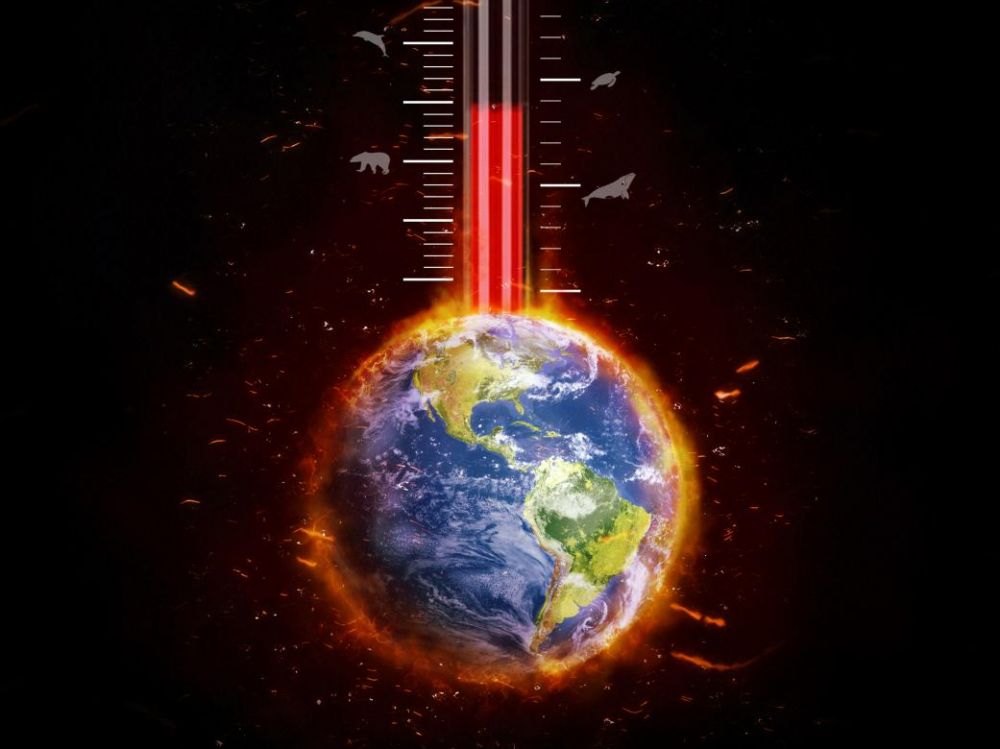
Adapting to climate change will be biologically complex
How well are living things adapting to high temperatures? Unfortunately, the answer isless than we expectedaccording to work recently published in science progress. These experiments, conducted on bacterial assemblages, point to a bleak future as climate change begins.
Thermal endurance test against heat waves
“I was surprised, I was expecting to be able to extend the super heat tolerance of bacteria by more than 1°C“, according to Macarena Tolle Riera, first author of this new work carried out at the University of Zurich (Switzerland). Higher thermal endurance is the maximum temperature at which an organism can live. On Earth, this physiological limit “He must be under increasing pressure“Due to a projected temperature increase of 0.4 to 4.8 °C during the 21st century,” the researchers wrote. But living does have some flexibility. “When exposed to severe environmental stresses, populations can avoid extinction through evolutionary adaptation, a phenomenon known as evolutionary rescue.‘,” the researchers write.
A bacterium gains only 1°C of heat tolerance
To test this evolutionary rescue in the face of heat, the team tested the bacteria’s resistance in the lab. Call Pseudoalteromonas haloplanktis, inhabits the coastal seas of Antarctica and withstands temperatures ranging from 2.5 to 29 degrees Celsius. For the researchers, the goal is to gradually increase the mercury applied to bacterial colonies to increase this physiological limit above 29°C. “We designed our experiments to maximize the success of evolutionary rescue: we used large microbial populations exposed to a gradual rise in temperature.“Especially because bacteria have the advantage of growing in large populations, with short generation times and small genomes,” explains Macarena Tolle Riera.This makes them ideal candidates for studying rapid adaptation to high temperatures‘,” the researchers explained in the publication.
But even by putting every opportunity in their favor, gradual adaptation of bacterial strains is daunting. 900 consecutive generations of P. haloplanktis They are grown at increasing temperatures from 15 ° C, including 300 generations with a maximum of 30 ° C. Beyond that, no colony can thrive any longer. “We were only able to extend the upper thermal tolerance by 1°C‘, suggesting that the upper heat tolerance can develop very little, concludes Macarena Toll-Riera.
Three temperature-related mutations
By observing colonies that grew at 30°C, the researchers discovered three recurrent mutations. The first affects 90% of these bacteria at the height of heat stress and is related to an enzyme (active protein) called Lon, whose role is to destroy proteins that have been altered by heat so that they cannot function properly. Because beyond the temperature threshold, proteins lose their three-dimensional structure necessary for their function. The other two mutations concern 87.5 and 85% of spotted bacteria, and affect, respectively, the reduction in the number of chromosomes it possesses. P. haloplanktis And the biosynthesis of its wall (which surrounds and protects the bacterial cell).
Why these spikes and how do they help work in the heat? “Unfortunately, we don’t know yet“, admits Macarena Toll-Riera who and his team are conducting additional experiments to find out.”We hypothesize that the observed mutations have a role in destroying denatured proteins and maintaining cell wall integrity.. “With regard to the Lon mutation, which is the most common, it assumes that an increase in temperature leads to denaturation of proteins essential for survival.”Another possibility is that when the temperature rises even more, there are more denatured proteins than Lon can process. The accumulation of denatured proteins is known to be cytotoxic. ”
Larger organisms that live in smaller groups will adapt less
Although Macarena Toll-Riera remains cautious while waiting for more data, considering migration possibilities, for example, these experiments do not bode well for the future ability of organisms to adapt to ongoing climate change. While researchers have done their best to promote a gradual evolutionary adaptation to heat P. haloplanktisAnd although bacteria are by nature fast-evolving organisms, they cannot get more than 1°C of maximum tolerance. “Moreover, although global climate change is a gradual process, it also causes extreme and sudden weather events, such as heat waves, hurricanes, and droughts.Events such as these can significantly affect wild populations and have already led to the extinction of some native groups of bumblebees, corals, fruit bats and kelp forests. If bacteria are really struggling, then larger organisms, living in groups, worry the researchers in the publication. smaller and at temperatures closer to their higher thermal tolerance.They are more likely to die during extreme heat waves‘,” conclude the researchers.

“Organizer. Social media geek. General communicator. Bacon scholar. Proud pop culture trailblazer.”
